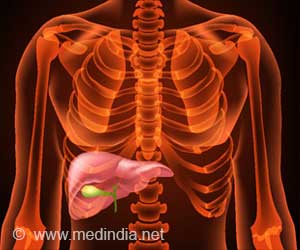- Life expectancy serves as a vital indicator in public health, as the average years a person is expected to live based on current mortality rates
- In India, the progression from 70.42 years in 2023, marking a 0.33% increase from 2022 indicates positively
- Despite positive indicators, India faces many healthcare system challenges
Life Expectancy trends in India
The current life expectancy for India in 2023 is 70.42 years, a 0.33% increase from 2022. According to the paper, "The number of years an average Indian can expect to live at the time of their birth has increased sharply, from 47.7 years in 1970 to 69.6 years in 2020, a gain of more than two decades.""From 1970 to 2016, Indian women's life expectancy at birth climbed by 24 years, outpacing that of men, who saw a 20-year increase during the same time period. Additionally, compared to women, men have a 15-year average life expectancy at 60 years old, while women have a 17-year average life expectancy.
Infant Mortality Rate (IMR) data for India was also included in the study. 132 newborns died at birth in 1970, out of 1000 total births. As of 2022, 26 out of every 1,000 babies died, a decrease from the previous data.
It's significant to mention that there are now fewer instances of women dying while giving birth. Out of 10,000 deliveries, 556 women died in 1990, according to statistics. This number dropped to 113 per 10,000 people in 2018 (1✔ ✔Trusted Source
GHE: Life expectancy and healthy life expectancy
Go to source).
Inadequacies in India’s Healthcare System
Even though the indicator values of India remain positive it is still much lower than the global average. This can be associated with certain issues with the system as follows,Lack of Resources
Doctors work under difficult circumstances including congested outpatient facilities, insufficient staff, supplies, and infrastructure.
Doctor patient Ratio
India barely has 10 lakh registered doctors to care for its 1.3 billion residents. Rural areas have as little as 18.8% qualified doctors, compared to 58% in urban areas. In contrast to the suggested ratio of one government doctor for every 1,000 people, the WHO reports that there are only 10,189 people.
Unaffordable Treatments
At least 10% of household budgets for health services are spent by more than 17% of Indians. According to a research on affordability by the Competition Commission of India, 50 to 65% of Indians do not regularly have access to necessary medications.
Patient-Doctor Relationship
The publicizing of medical staff, hospital, and doctor errors as well as doctor misconduct has further reduced patients' faith in healthcare facilities. Increasing violence against doctors is also raising questions about the trust gap between patients and doctors.
Epidemic risk
India experiences a physician and clinic shortage, particularly in rural areas and during times of epidemics and diseases like tuberculosis. As a result, patients either receive no diagnosis or receive it too late.
Ineffective Implementation of Laws
Laws are not being implemented properly by states, despite the fact that these laws call for both incarceration and the recovery of damages from offenders for property loss and medical professional injury. For instance, West Bengal also passed a law to protect doctors, but owing to poor execution, it hasn't been able to stop the ongoing problem between doctors and patients.
Quacks
Due to a lack of skilled medical professionals, there are an increasing number of unqualified quacks. In rural India, just 19% of those who identify as doctors really hold a medical degree. These charlatans typically have training in complementary therapies, such homeopathy, yet present themselves to those in need of assistance as licensed medical practitioners (2✔ ✔Trusted Source
Challenges to Healthcare in India - The Five A's
Go to source).
Measures taken by the Government of India to Increase Average Life Expectancy
The government of India has taken various public health actions at multiple levels,- For 40% of India's population, the Ayushman Bharat initiative which consists of the Health and Wellness Centers (HWCs) and Pradhan Mantri Jan Arogya Yojana (PMJAY), resolves access disparities and lowers out-of-pocket costs for secondary and tertiary care hospitalization
- Yoga and other physical activities are among the good decisions and behaviors that the HWC (Health and Wellness Centre) promotes
- By modernizing existing Sub Centers (SCs) and Primary Health Centers (PHCs), National Health Mission (NHM) is building a network of 1,50,000 HWCs to deliver Comprehensive Primary Health Care (CPHC), which is available to everyone who uses public health facilities and is free of charge
- In addition to Reproductive, Maternal, Neonatal, Child and Adolescent Health (RMNCH+A) care, the CPHC basket of services includes screening in 12 major service areas
- The CPHC basket of services includes 12 important service areas that go beyond reproductive, maternal, neonatal, child, and adolescent health (RMNCH+A) services, such as elderly care, palliative and rehabilitative care, oral, eye, and ENT care, mental health, and first-level care for emergencies and trauma, as well as screening and treatment for NCDs (diabetes, high blood pressure, oral, breast, and cervical cancers, etc.)
- All aged citizens over the age of 60 are given a continuum of care through the National Program for Healthcare of the aged (NPHCE)
- Funding for the construction of healthcare facilities and the provision of services in the form of untied funds, yearly maintenance grants, and Rogi Kalyan Samiti (RKS) monies
- New initiatives have been undertaken like the Screening for Non-communicable Diseases undertaken
- LAQSHYA (Initiative to reduce preventable maternal and new-born mortality, morbidity and stillbirths associated with the care around delivery in Labour room and Maternity OT and ensure respectful maternity care), Surakshit Matritva Aashwasan (SUMAN) (to end all preventable maternal and neonatal deaths) etc (3✔ ✔Trusted Source
Ministry of Health and Family Welfare: Average Life Expectancy
Go to source) - GHE: Life expectancy and healthy life expectancy - (https://www.who.int/data/gho/data/themes/mortality-and-global-health-estimates/ghe-life-expectancy-and-healthy-life-expectancy)
- Challenges to Healthcare in India - The Five A's - (https://www.ncbi.nlm.nih.gov/pmc/articles/PMC6166510/)
- Ministry of Health and Family Welfare: Average Life Expectancy - (https://pib.gov.in/PressReleseDetail.aspx?PRID=1606209)
References :
Source-Medindia











